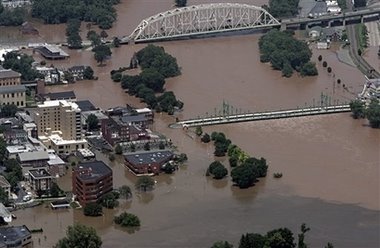Why 5 degrees really matters

Methane hydrate gasification
In 2002 a BBC2 'Horizon' documentary, 'The Day the Earth Nearly Died,' summarized some recent findings and speculation concerning the Permian extinction event. Paul Wignall examined Permian strata in Greenland, where the rock layers devoid of marine life are tens of meters thick. With such an expanded scale, he could judge the timing of deposition more accurately and ascertained that the entire extinction lasted merely 80,000 years and showed three distinctive phases in the plant and animal fossils they contained. The extinction appeared to kill land and marine life selectively at different times. Two periods of extinctions of terrestrial life were separated by a brief, sharp, almost total extinction of marine life. Such a process seemed too long, however, to be accounted for by a meteorite strike. His best clue was the carbon isotope balance in the rock, which showed an increase in carbon-12 over time. The standard explanation for such a spike – rotting vegetation – seemed insufficient.
Geologist Gerry Dickens suggested that the increased carbon-12 could have been rapidly released by upwellings of frozen methane hydrate from the seabeds. Experiments to assess how large a rise in deep sea temperature would be required to sublimate solid methane hydrate suggested that a rise of 5°C would be sufficient. Released from the pressures of the ocean depths, methane hydrate expands to create huge volumes of methane gas, one of the most powerful of the greenhouse gases. The resulting additional 5°C rise in average temperatures would have been sufficient to kill off most of the life on earth.
Sudden release of methane hydrate has also been hypothesized as a cause of the Paleocene-Eocene Thermal Maximum extinction event.




